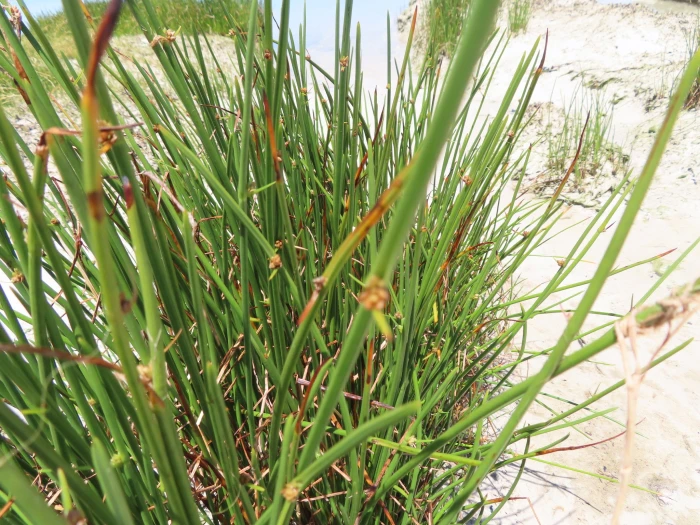Smooth Flatsedge
(Cyperus laevigatus)
Smooth Flatsedge (Cyperus laevigatus)
/
/

© linkie
CC BY 4.0
Image By:
© linkie
Recorded By:
Copyright:
CC BY 4.0
Copyright Notice:
Photo by: © linkie | License Type: CC BY 4.0 | License URL: http://creativecommons.org/licenses/by/4.0/ | Uploader: linkie | Publisher: iNaturalist |























Estimated Native Range
Climate Requirements
| • Precipitation | 66" - 79" |
| • High Temp. | 79°F - 100°F |
| • Low Temp. | 40°F - 52°F |
Summary
Cyperus laevigatus, commonly known as smooth flatsedge, is a perennial sedge native to a variety of wetland habitats including coastal marshes, riverbanks, and the margins of hot springs in tropical and subtropical regions. Its native range spans the Americas, Africa, the Mediterranean, Australia, and Asia. Smooth flatsedge typically grows up to 24 inches tall and is characterized by its cylindrical spikelets, which can vary in color from green to dark brown. It thrives in wet areas, particularly in brackish and saline soils.
Smooth flatsedge is valued for its ability to stabilize soil in erosion-prone areas and is often used in restoration projects for this purpose. It is also appreciated for its simple, yet attractive appearance in water gardens and naturalized plantings. In cultivation, it requires consistently moist to wet soil conditions and can tolerate a range of light exposures from full sun to partial shade. However, it is potentially invasive in some regions, and gardeners should be cautious about planting it outside its native range. Its aggressive growth can outcompete native vegetation, so it is important to check local regulations and invasive species lists before cultivation.CC BY-SA 4.0
Smooth flatsedge is valued for its ability to stabilize soil in erosion-prone areas and is often used in restoration projects for this purpose. It is also appreciated for its simple, yet attractive appearance in water gardens and naturalized plantings. In cultivation, it requires consistently moist to wet soil conditions and can tolerate a range of light exposures from full sun to partial shade. However, it is potentially invasive in some regions, and gardeners should be cautious about planting it outside its native range. Its aggressive growth can outcompete native vegetation, so it is important to check local regulations and invasive species lists before cultivation.CC BY-SA 4.0
Plant Description
- Plant Type: Grass
- Height: 1.5-3 feet
- Width: 1-2 feet
- Growth Rate: Moderate, Slow
- Flower Color: N/A
- Flowering Season: Summer, Fall, Winter
- Leaf Retention: Evergreen
Growth Requirements
- Sun: Full Sun
- Water: High, Aquatic
- Drainage: Medium, Slow, Standing
Common Uses
Border Plant, Low Maintenance, Water Garden
Natural Habitat
Native to coastal marshes, riverbanks, and the margins of hot springs in tropical and subtropical regions
Other Names
Common Names: Smooth Flatsedge , Smooth Cyperus , Smooth Nutgrass , Nile Grass
Scientific Names: Cyperus laevigatus , Acorellus laevigatus , Acorellus laevigatus , Chlorocyperus laevigatus , Cyperus acuminatus , Cyperus acuminatus , Cyperus cossyrensis , Cyperus junciformis , Cyperus laevigatus f. depauperata , Cyperus laevigatus f. viridulus
GBIF Accepted Name: Cyperus laevigatus